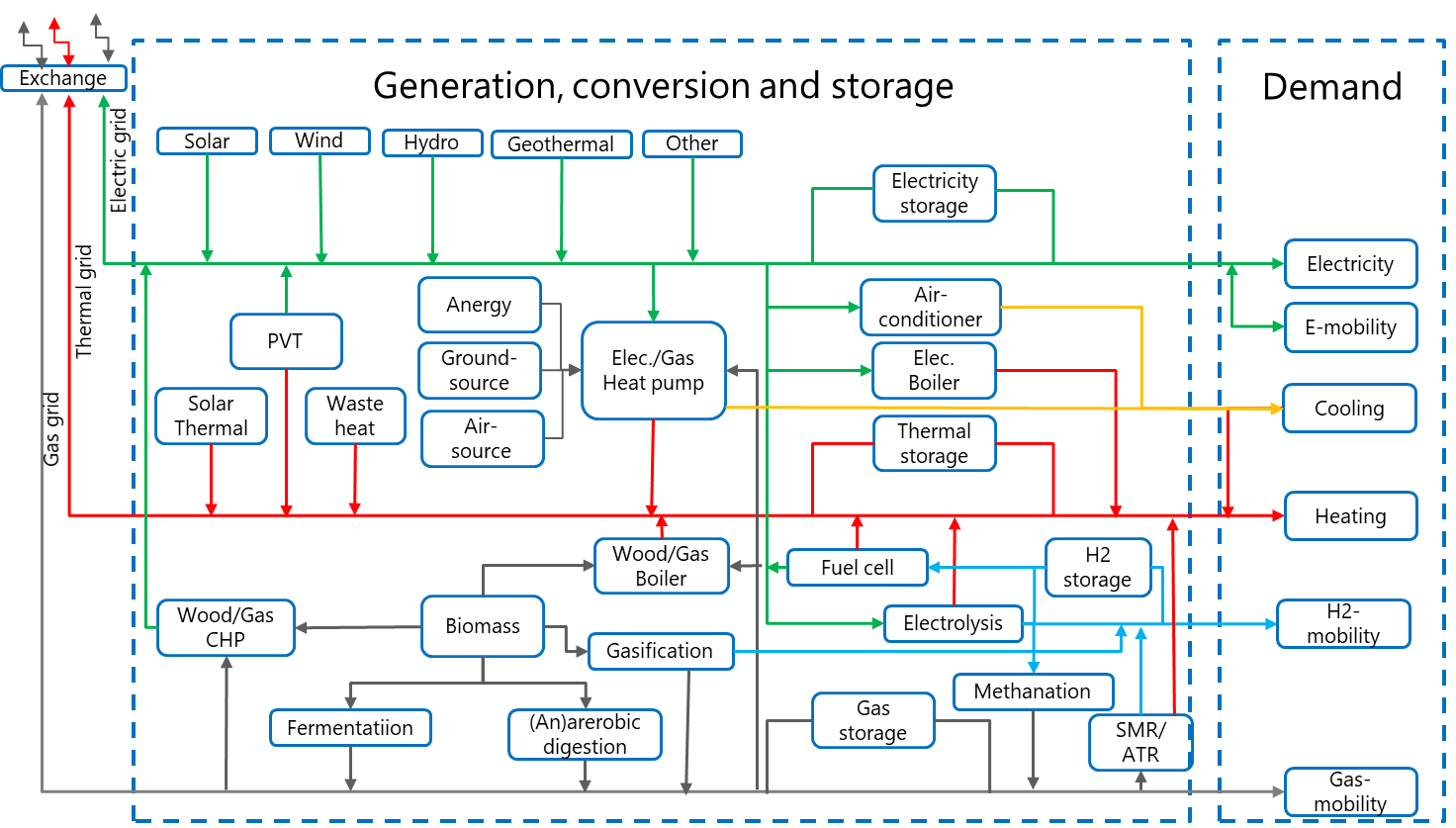The Ehub optimization tool has been developed by the Urban Energy System Laboratory of Empa to assess the performance (e.g., sustainability, financial) of multi-energy systems and identify optimal solutions for their design and operation.
It can be used for spatial resolution covering buildings to the district to the city to the country scale with single or multi-hub representation. It covers multi-energy sectors such as electricity, heating, cooling, gas, and hydrogen, including their interactions and interdependencies. The inputs to the model are:
- technology data,
- demand profiles,
- resource profiles,
- import/export prices,
- emission data/profiles, and
- other relevant boundary conditions.
The outputs are:
- sizing and dispatch of the generation,
- conversion and storage units,
- import/export energy flows,
- CO2 emission, and
- life cycle costs.
The Ehub tool provides a systemic view for integrating distributed energy resources in a multi-energy system. It is currently being used in a range of research projects such as
- SWEET PATHFNDR (site planning of flexible local energy system),
- SWEET DeCarbCH (local energy planning of future thermal grids),
- VSE Vorschau 2022 (Integral energy system modeling of Switzerland), and
- H2020 Eco-Qube (Design concepts for building integration of small-scale data centers).
In DeCarbCH, the Ehub tool enables simultaneous evaluation of a wide range of energy supply and district heating/cooling options for a given site. Within DeCarbCH, the representation of mass/energy flows and temperature dynamics of the thermal network will be enhanced in the Ehub tool using surrogate modeling/model reduction approaches. This way, the Ehub tool can capture the effect of temperature fluctuations of the future thermal grid with varying energy sources (renewables/waste heat, etc.).
For more details on the Ehub tool contact:
Binod Koirala, binod.koirala@empa.ch
Andrew Bollinger, andrew.bollinger@empa.ch
